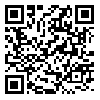BibTeX | RIS | EndNote | Medlars | ProCite | Reference Manager | RefWorks
Send citation to:
URL: http://ioh.iums.ac.ir/article-1-919-en.html
Background and aims: In most industries, manual material handling is an inevitable part of the job.Acute low back pain and workers disability are most important injuries caused by manual material handling tasks. Therefore, evaluation of workplace and working conditions and interventional countermeasures are essential.. The aim of this study was to evaluate the biomechanical risk factors of manual material handling in a metal casting industry in Iran.
Methods: In this study, first, tabular task analysis using TTA technique was adopted in some selected jobs in the high risk work stations. Then, using NIOSH equation as well as Snook tables permissible weight load was determined for each of the evaluated work stations. Simultaneously, biomechanical estimation of compressive force on low back area was done by Utah methodology.
Results: The resultsof this study showed that incase of exceeding the load more than 37 kg, the compressive force will be in an unacceptable range. Similar finding was acquired using NIOSH equation and Snook tables. In further assessments, determined risks were still high, even by correcting the angle or lifting distance of the manual material handling. Evaluating by NIOSH equation it was revealed that 60% of work stations had impermissible load weights.
Conclusion: According to the results of the current study, work mechanization is the best interventional activity that may decline the risk level. In case of lower frequency of load lifting, correcting the low back angle as well as decreasing the load distance from the front of the body is recommended.
Keywords: MMH, NIOSH equation, Snook tables, biomechanical, Metal Casting,
Received: 2013/02/16 | Accepted: 2013/09/2 | Published: 2014/08/22
| Rights and permissions | |
 |
This work is licensed under a Creative Commons Attribution-NonCommercial 4.0 International License. |





